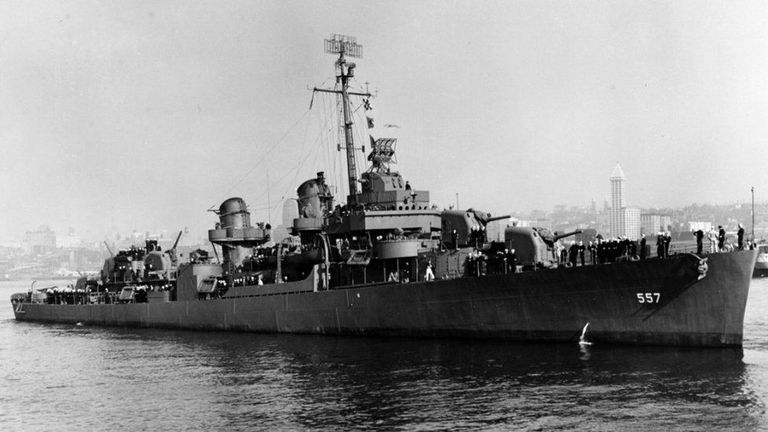Scientists have discovered that a Nazi ship sunk by the Royal Air Force during World War II is still polluting the ocean floor.
V-1302 John Mahn is one of thousands of ship and aircraft wrecks on the bottom of the North Sea, which also houses millions of tons of artillery shells, bombs and other ammunition from both world wars.
The Mahn was once a German trawler, later requisitioned by Hitler’s army as a patrol boat.
It was sunk by the British off the coast of Belgium in a sprint across the Channel in 1942, when German battleships in need of repairs were escorted home from the port of Brest in northwestern France.
While ships like the Marne were being sunk, more important battleships were trying to make their way all the way to Germany.
This was seen as an embarrassment for the British army, and Winston Churchill ordered an investigation.
Eighty years later, Marne’s death has proven to be costly to the microbiology and geochemistry of the seafloor on which it rests, as it leaks dangerous pollutants such as explosives and heavy metals.
A research team from Ghent University made the discovery as part of its North Sea Shipwreck project to understand how the remnants of the world wars affect the natural world today.
‘We shouldn’t forget that sinking ships is dangerous’
While there is public interest in discovering wrecks due to their historical value, researchers say the potential environmental impacts are often overlooked.
In Mahn’s case, the samples were taken from nearby sediments and the steel hull of the ship.
Various concentrations of toxic pollutants were found, including nickel, copper, arsenic, explosives and naturally occurring chemicals in coal, crude oil and natural gas.
Researcher Josefien Van Landuyt said: “While shipwrecks can act as artificial reefs and have enormous human storytelling value, we should not forget that they can be dangerous man-made objects that are inadvertently introduced into the natural environment.
“Today, it is for this reason that the new wreck is being dismantled.”
Ms Van Landuyt warned that the findings, published in Frontiers in Marine Science, were just the tip of the iceberg.
Read more tech news:
UK regulator ‘final decision’ to order Meta to sell GIF library
Strict or harsh parenting ‘may increase children’s risk of depression’
TikTok will introduce adults-only livestreaming option
It is estimated that the wrecks caused by the global world wars contain a total of 2.5 million to 20.4 million tons of petroleum products.
“While we don’t see these ancient shipwrecks and many of us don’t know where they are, they still contaminate our marine ecosystems,” added Ms Van Landuyt.
“In fact, as they age, they may increase environmental risks through corrosion, which opens up previously enclosed spaces. As a result, their environmental impact is still evolving.”
